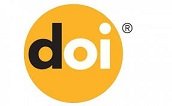Student Responses to Virtual Synchronous, Hybrid, and Face-to-Face Teaching/Learning
1134
518
Abstract
The authors of this research project developed a survey to gather information from graduate students about the experiences using a virtual synchronous platform, called Adobe Connect. While the format of the virtual classroom should encourage robust discussion, the authors found this not to be the case in the online virtual synchronous courses in education. Curious as to why the quality of discussion was poorer than expected, the authors surveyed graduate students enrolled in their virtual, hybrid (combination of face-to-face and virtual), and face-to-face classes over four semesters. Analysis of respondents’ Likert Scale ratings and answers to open-ended questions about various aspects of virtual synchronous, hybrid, and face-to-face course presentations were conducted, with a major focus on virtual synchronous online experiences. Results indicated that a learning curve exists when taking virtual synchronous course delivery. In other words, the more courses the students took the more competent and satisfied they became.
Keywords
Virtual synchronous, Videoconferencing, Hybrid, Face-to-face, Teaching
Full Text:
PDFReferences
Flynn-Wilson, L., & Reynolds, K. E. (2021). Student responses to virtual synchronous, hybrid, and face-to-face teaching/learning. International Journal of Technology in Education (IJTE), 4(1), 46-56. https://doi.org/10.46328/ijte.43
DOI: https://doi.org/10.46328/ijte.43
Refbacks
- There are currently no refbacks.

This work is licensed under a Creative Commons Attribution-NonCommercial-ShareAlike 4.0 International License.
Abstracting/Indexing







International Journal of Technology in Education (IJTE) - ISSN:2689-2758
affiliated with
International Society for Technology, Education and Science (ISTES)

This work is licensed under a Creative Commons Attribution-NonCommercial-ShareAlike 4.0 International License.
 International Journal of Technology in Education
International Journal of Technology in Education